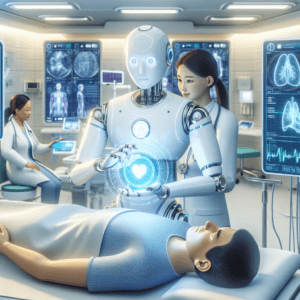The Future of Product Development: Trends and Innovations
In today’s swiftly evolving technological landscape, product development is witnessing significant transformations. Various trends and innovations are shaping the future of product conception, design, and market introduction. We will delve into some key aspects:
- Agile and Iterative Processes: The traditional waterfall approaches are being supplanted by more agile and iterative methodologies. Cross-functional teams collaborate closely, enabling faster development cycles and more rapid feedback loops. Practices such as continuous integration, continuous delivery (CI/CD), and DevOps are becoming the norm.
- AI and Machine Learning Integration: Artificial intelligence (AI) and machine learning (ML) are revolutionizing product development. These technologies, ranging from predictive analytics to natural language processing, enhance decision-making, automate tasks, and improve user experiences. Envision personalized product recommendations, chatbots, and self-learning algorithms.
- IoT-Enabled Products: The Internet of Things (IoT) is bridging everyday objects with the digital realm. Smart devices, wearables, and artificial sensors gather data, facilitating real-time monitoring, predictive maintenance, and personalized services.
The future is poised for seamless IoT integration into product design.
- Sustainable and Eco-Friendly Designs: There is a growing consumer demand for environmentally conscious products. Sustainable materials, energy-efficient designs, and circular economy principles are rising to prominence. Companies prioritizing eco-friendly practices are set to prosper in the long term.
- Collaborative Platforms and Open Innovation: Product development is expanding beyond internal teams. Open innovation platforms enable collaboration with external partners, startups, and customers. Crowdsourcing ideas and co-creation are leading to more advanced innovations.
- 3D Printing and Rapid Prototyping: Additive manufacturing (3D printing) facilitates rapid prototyping and customization. This technology speeds up the design-to-product cycle, minimizes waste, and allows for intricate geometries. The prevalence of 3D-printed products is expected to increase.
- Blockchain for Supply Chain Transparency Blockchain: technology provides transparency and traceability within supply chains. It plays a crucial role in verifying product origins and preventing counterfeiting, thereby enhancing trust and accountability.
- Human-centered design user: experience (UX) remains paramount. Methods like design thinking, empathy mapping, and usability testing are pivotal in product development. A deep understanding of user requirements and pain points is essential for creating successful products.
- Biotechnology and Bioengineering Biotechnology: is making a significant impact on product development. The intersection of biology and technology, from lab-grown meat to bio-fabricated materials, holds vast potential.
In conclusion, the future of product development is dynamic, cooperative, and driven by technology. Companies that acclimatize to these trends and maintain talent will flourish in an ever-changing business. Flashback, the boundaries of the invention are measureless!
About Us:
0101 Digit All is a technology solution company, based in Frisco, Texas, that offers top-tier AI solutions and software development services worldwide. Our mission is to lead in customer experience and business growth through innovative technology. With expertise in product development, AI, data, mobility, CRM, web, and cloud, we serve clients globally, including the US, India, Australia, the Middle East, Europe, and Canada.

 The future is poised for seamless IoT integration into product design.
The future is poised for seamless IoT integration into product design.